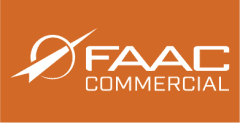Bus Operator Training for a Diverse Array of Fleet Vehicles
Published

As we’ve discussed in the past, one key to the effectiveness of public transport simulation training is “presence“—i.e., the trainee’s convincing subjective experience of being in an actual vehicle. As Rob Raheb (an internationally published author and expert in simulation and driver training) has noted:
“The more realistic the simulation is, the more ‘buy-in’ from the student. “When a simulator’s Operator’s cab is designed using a vehicle’s specification, rather than just incorporating a generic dash panel, it gives the trainee the opportunity to develop experience and muscle memory with the location and function of the actual operating controls. Because the components are in this consistent location newly hired operators can avoid confusion when transition to the real vehicle.”
Every element of a FAAC simulator bends toward creating that immersive training experience. This ranges from how a vehicle feels as it traverses different terrain with our cab only integrated motion system, what the operator sees with our crisp 4k graphics and even how passengers behave with our new Transit Response passenger interaction simulator. All of this can be customized to a specific fleet of vehicles—including dash layout, OEM gauges, and other authentic components integrated with the hardware so that their behavior matches the real-life experience.
But what if your transit agency uses several different types of vehicles? Are you stuck getting a generic panel that approximates the common features of all of them? Or filling a warehouse with different sims to match your different buses?
Not with FAAC. Drawing on our experience designing and fabricating flexible and modular training simulators for the military, we’ve brought swappable panels to public transport simulation training.
One Public Transport Simulation System, Many Vehicles
As fleets blend their OEMs, a single transit training sim can now be used introduce Operators to a variety of vehicle controls they might encounter on the job: New Flyers, Proterra, ENC, Gillig, 40-foot transit buses, articulated buses, and more. The simulator cab is constructed in a way that facilitates easy panel swaps through quick disconnects. The improves the trainers experience by simplifying the process to 2 connection points – total.
For example, FAAC fabricated a swappable simulator for NICE (Nassau Inter-County Express) Bus, headquartered in New York. This is a large transit agency, with 600 operators working on more than 300 pieces of equipment. That equipment ranges from articulated buses and 40-foot transit buses to a variety of cut-away paratransit vehicles.
“We have a constant training and renewal process,” explains Todd Chever, Director of Safety and Training for NICE. “Getting Operators, for everybody, is a constant battle. So it’s got a lot of benefits, having a single simulator that accurately represents [our entire fleet]. Ours is primarily used as a New Flyer Bus—one of the primary vehicles we have here. But it’s fully adaptable to the variety of Orion, as well as our various cut-away vehicles. The mirrors are adaptable to anything you need.”
More importantly, many transit agencies are discovering that investing in a sim with swappable panels means that their simulators can grow with their agency. As they add new vehicles to their fleet (such as EV buses), new panels can be added to their collection. Furthermore, FAAC is dedicated to developing components and software that allow for continued upgrades as new technology emerges so that your training programs are never out of date. No longer will a transit simulator be “frozen in time” upon delivery.

